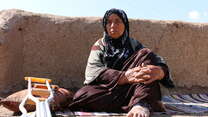The world is facing increasing numbers of humanitarian emergencies with health consequences from a range of crises including natural disasters, conflicts, chemical or radio-nuclear spills and infectious disease outbreaks. Many settings are complex, with more than one cause. In these settings, health service infrastructure, access to medicines and medical supplies and the health workforce is often weakened, increasing the challenges of delivering good-quality care.
Due to their growing prevalence, Non-communicable Diseases (NCDs) have become a major public health threat in humanitarian settings around the world. NCDs are the leading causes of death and disability worldwide, including in low- and middle-income countries (LMICs). Common NCDs include cardiovascular disease, diabetes, chronic respiratory diseases and cancer. In emergency contexts epilepsy and kidney disease are also common NCDs. According to the WHO these common NCDs are responsible for almost 70% of all deaths globally with 82% of these premature deaths happening in LMICs. Studies show that humanitarian settings are associated with increased NCD morbidity and mortality that may persist for years following the onset of a crises. In the aftermath of a crises, people living with an NCD are particularly vulnerable to exacerbations of their condition. Factors contributing to this vulnerability include:
- The interruption of regular medical treatment often with the destruction of health care facilities
- Severe situational stress and anxiety leading to use of tobacco and harmful use of alcohol
- Degradation of environmental conditions with the inhalation of smoke and other toxic chemicals
- Physical injuries and physical inactivity
- Shortage of water and regular food supplies coupled with unhealthy diets
- Overcrowding and poor living standards with the loss of shelter, livelihood and the damage of essential societal infrastructure
This resource package provides health workers with guidance to facilitate the delivery of quality NCD care in these situations. When national guidance is not available, PEN-H may be adapted to suit national contexts. The package could also complement national guidance for the management of NCDs in humanitarian settings
The main purpose of PEN-H is to reduce morbidity and mortality due to NCDs by providing guidance on continuity of care for people living with NCD; treating incident life-threatening NCD conditions; preventing exacerbations of NCDs; and facilitating post-acute health system recovery. The guidance included in PEN-H is derived from evidence based guidelines including the WHO Package of Essential NCD interventions (WHO PEN). The package is primarily intended for nurses, nurse practitioners, medical officers and other clinical staff who provide NCD care in humanitarian settings.
The PEN-H package includes a range of clinical guides, clinical protocols in the form of flowcharts, self-care guides, and a facility readiness checklist.
French and Arabic versions of the toolkit are available below:
Video:
This animation aims to help community health workers in humanitarian settings gain a better understanding of two common non-communicable diseases - diabetes and hypertension - including their symptoms, associated risk factors and treatment. It was produced for The International Rescue Committee Non-Communicable Diseases Consortium Project, a collaboration made possible through funding from USAID and The Office of U.S. Foreign Disaster Assistance (OFDA). Available in the following languages:



